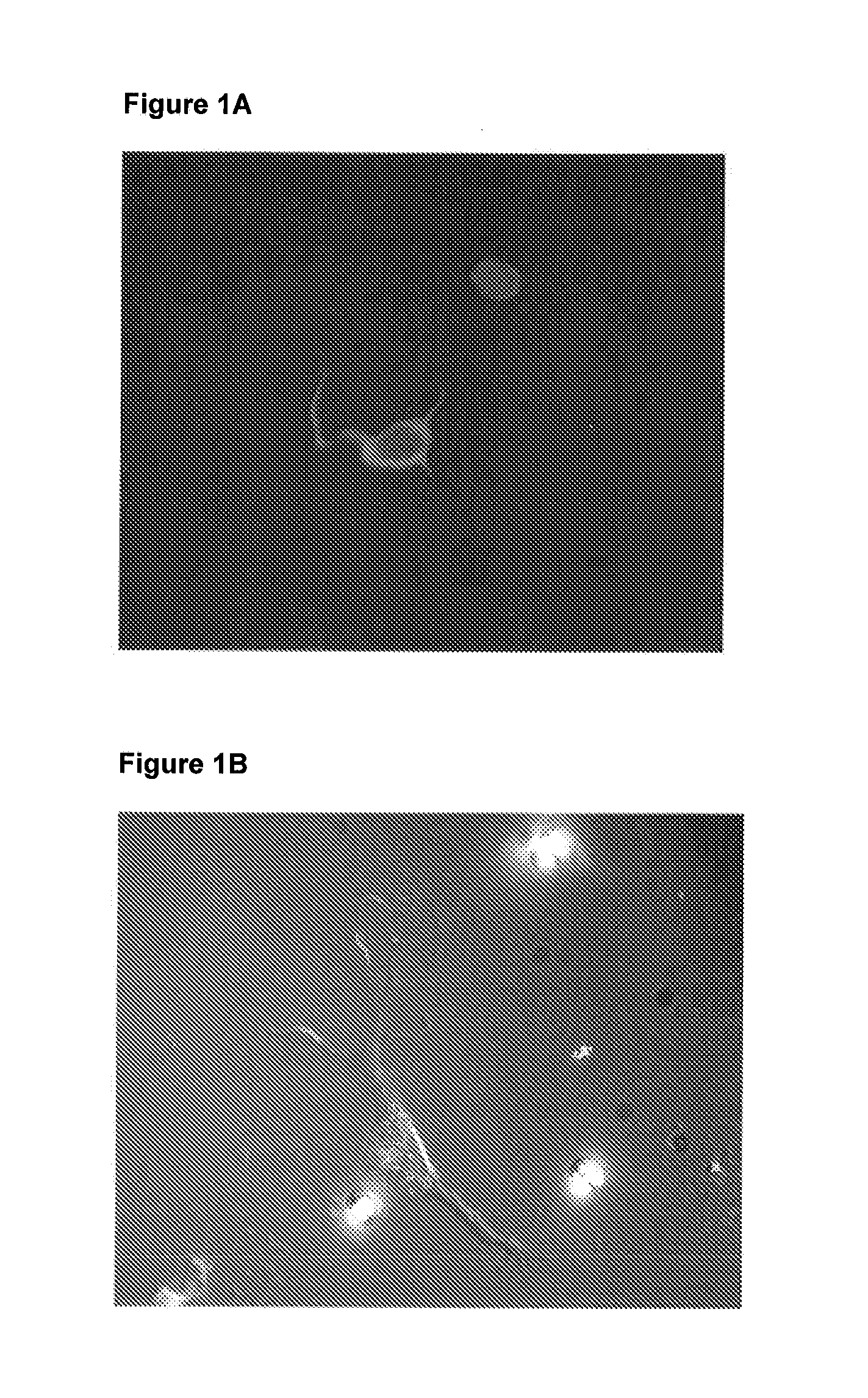Magnetic cells for localizing delivery and tissue repair
- Summary
- Abstract
- Description
- Claims
- Application Information
AI Technical Summary
Benefits of technology
Problems solved by technology
Method used
Image
Examples
example 1
Coating Magnetic Nanoparticles for Surface Attachment
[0029]For coating various magnetic nanoparticles for surface attachment to neurons, a procedure analogous to that effective for coating 1 μm particles activated with carboxylic acid (Dynal Biotech, Oslo, NORWAY) or for coating 50 nm particles (e.g. Miltenyi Biotech) with anti-TrkB (BD Bioscience, San Jose, Calif., USA) can be used. The coating procedure is performed according to the manufacturer's standard protocols. Briefly, particles are washed twice with 25 mM MES at approximate pH6 buffer for approximately 10 min each time. Approximately 150 μg of anti trkB in MES buffer is used for functionalizing particles, and slow tilt rotated for approximately 30 min. Then, 0.3 mg of EDC in MES buffer is added, and incubated overnight at 4° C. with tilt rotation. Finally, particles are washed in PBS for four times and PBS is added to a final 1 mg / ml. We found that 1 μm magnetic particles coated in this manner can strongly bind to RGCs (FI...
example 2
Optimal Functionalization (Surface Coating) of Commercially Available Superparamagnetic Nanoparticles to Maximize Binding to Retinal Ganglion Cells
[0030]Commercially available surface activated superparamagnetic nanoparticles as small as 25 nm (MicroMod Partikeltechnologie GmbH, GERMANY) can be coated according to manufacturers' protocols with functional molecules selected for their ability to strongly and specifically bind neurons. Briefly, tosyl-activated or carboxyl-activated magnetic nanoparticles can be used for attaching antibodies, proteins and other biomolecules that contain primary amino or sulphydryl groups. We will use manufacturers' suggested protocols for nanoparticle and protein / antibody concentrations as a starting point to covalently attach the following proteins: antibodies to the trkB receptor, antibodies to the surface adhesion molecule L1, antibodies to surface integrin receptors, and cholera toxin subunit B, which binds to the GM1 ganglioside on the surfaces of ...
example 3
Measurement of Binding Specificity of Magnetic Nanoparticles in Purified and Mixed Cultures
[0031]To assay for nanoparticle binding by neurons, retinal ganglion cells (RGCs) can be cultured according to standard protocols (Meyer-Franke et al., 1995; Goldberg et al., 2002b). We will add functionalized nanoparticles generated as described above to the RGCs 2 hours after plating, leave them for an additional 1 hour at 37° C., and then exchange the media to remove excess unbound nanoparticles. We will leave the neurons in culture for 1 hour to 3 days, to examine whether the nanoparticles remain attached with time. At the end of the culture period we will use three techniques to confirm nanoparticle binding: (1) direct visualization using high-magnification microscopy available in the lab; (2) commercially available iron staining kits (Sigma) in the case of nanoparticles with exposed iron surfaces; and (3) standard immunohistochemistry with fluorescent secondary antibodies directed agains...
PUM
| Property | Measurement | Unit |
|---|---|---|
| Diameter | aaaaa | aaaaa |
| Diameter | aaaaa | aaaaa |
| Magnetism | aaaaa | aaaaa |
Abstract
Description
Claims
Application Information
 Login to View More
Login to View More - R&D
- Intellectual Property
- Life Sciences
- Materials
- Tech Scout
- Unparalleled Data Quality
- Higher Quality Content
- 60% Fewer Hallucinations
Browse by: Latest US Patents, China's latest patents, Technical Efficacy Thesaurus, Application Domain, Technology Topic, Popular Technical Reports.
© 2025 PatSnap. All rights reserved.Legal|Privacy policy|Modern Slavery Act Transparency Statement|Sitemap|About US| Contact US: help@patsnap.com



